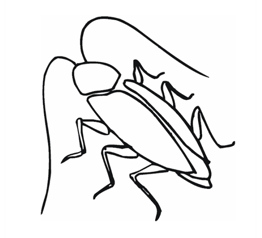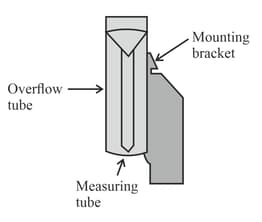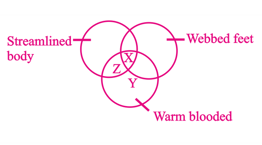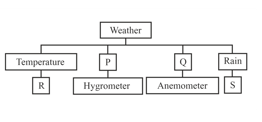Anil Ahlawat Solutions for Chapter: Weather, Climate and Adaptations of Animals to Climate, Exercise 1: EXERCISES
Anil Ahlawat Science Solutions for Exercise - Anil Ahlawat Solutions for Chapter: Weather, Climate and Adaptations of Animals to Climate, Exercise 1: EXERCISES
Attempt the free practice questions on Chapter 6: Weather, Climate and Adaptations of Animals to Climate, Exercise 1: EXERCISES with hints and solutions to strengthen your understanding. NSO Science Olympiad Workbook Grade 7 solutions are prepared by Experienced Embibe Experts.
Questions from Anil Ahlawat Solutions for Chapter: Weather, Climate and Adaptations of Animals to Climate, Exercise 1: EXERCISES with Hints & Solutions
The organism in the given figure has a flattened body shape. This characteristic helps the organism to

The figure shows an instrument that is used to measure _____.

Read the following statements.
(a) In India, rain is mainly brought by two kinds of humidity-laden winds, and _____.
(b) Scientists who study and predict weather are known as _____.
(c) The climate in Kerala is _____ and _____.
Select the option which correctly fills the blanks in any two of these statements.
The lizard is well-adapted to live in human dwellings. Which function of its adaptations is incorrectly described?
| Adaptation | Function | |
| (A) | Long, sticky tongue | To catch fast moving prey |
| (B) | Long, narrow and flat body | To crawl between narrow crevices and spaces easily |
| (C) | Sticky pads on the underside of the feet | To walk on walls and ceilings without falling |
| (D) | Tail that can drop off and wriggles for a while | To attract mates for reproduction |
Select the correct option for the given fill in the blanks:
(i) Camel’s skin does not possess _____ glands.
(ii) The Siberian crane migrates from Russia to India as the _____ approach.
(iii) Many birds living in polar regions _____ to warmer regions in winters.
(iv) The places near the equator are usually _____ because near the equator
Sun’s rays fall _____.
Fill up the blanks by selecting the correct option.
| (i) | (ii) | (iii) | (iv) | |
| (A) | Sweat | Winters | Migrate | Hotter, Vertically |
| (B) | Sweat | Winters | Hibernate | Hotter, Horizontally |
| (C) | Sweat | Summers | Migrate | Colder, Horizontally |
| (D) | Sweat | Summers | Migrate | Colder, Vertically |
Refer to the given Venn diagram and select the correct statements regarding animals X, Y and Z.

(i) Y can close its nostrils and remain underwater for long duration.
(ii) X possess glands under the eyes that help the body to get rid of excess salt.
(iii) Blubber is present under the skin of X and Z which protects them from cold.
(iv) X and Y are adapted to live in extremely cold climate of polar regions.
(v) Y live in groups and huddle together to keep themselves warm.
(vi) Z camouflage with the surrounding to avoid predators.
Read the given passage.
The land near the equator is colder than the land away from it. Near the equator, Sun’s rays fall vertically. As the latitude increases, the rays become more and more slanting. Vertical rays spread over a larger land area than slanting rays. Also, they pass through a thicker layer of the atmosphere which absorbs a large part of their heat. Hence, the land near the equator gets heated up lesser by the Sun than the land away from it, in a given time.
Some words have been italicised in the given passage. Select the incorrect statement regarding these.
Refer to the given flow chart and select the option which correctly identifies P, Q, R and S.

| P | Q | R | S | |
| (A) | Relative humidity | Wind speed | Thermometer | Rain gauge |
| (B) | Wind speed | Relative humidity | Thermometer | Psychrometer |
| (C) | Relative humidity | Wind speed | Psychrometer | Rain gauge |
|
(D) |
Wind speed | Relative humidity | Thermometer | Rain gauge |
